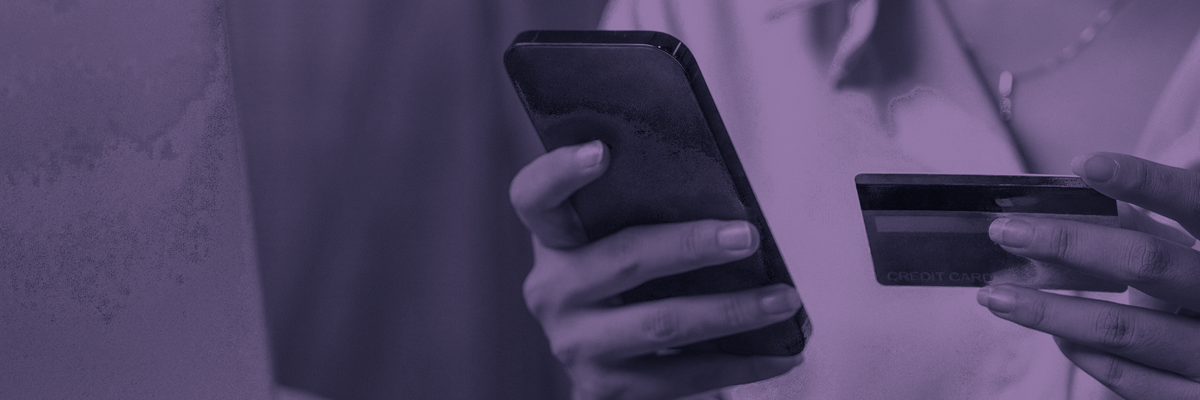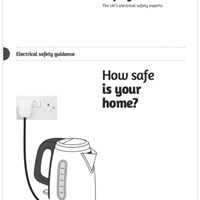We’ve all at some point suffered the disappointment of purchasing an item online, only to find something completely different inside the package when it finally arrives.
But what if your dud purchase ended up also being deadly?
One in ten Brits have first-hand experience of an electrical fire or shock caused by an electrical product they’ve bought online. Online marketplaces, like eBay, Amazon Marketplace, Facebook Marketplace and Wish, are not currently required by law to check the safety of products sold on their sites, in the same way traditional high street shops, such as John Lewis and Currys are. Our 'Don’t Be Electricked' campaign is raising this issue as a matter of national urgency.
Products put to the test
Outdoor living products
We examined 26 outdoor electrical products, all but one failed at least one safety test, with 81% failing water ingress protection tests. Notably, 96% of the products posed an increased risk of electric shock, and 46% had both electric shock and fire risks. Issues included inadequate protection against live parts, poor earthing, and dangerous plugs or adaptors. For example, some pool heaters caught fire when plugged in while not submerged in water.
Additionally, despite the removal of 14 hazardous products from the market in the first phase, 16 more were found to pose similar risks. Of these, seven were identical to the removed products, including some being sold by the same sellers under the same brand and model. The other five were identical in construction but sold under different brands or by different sellers, highlighting the persistence of unsafe products in the market.
Find out more about what we found in the full press release.
Home electricals
We purchased several products from online marketplaces and put them to the test to see if they held up to UK safety standards. See the results from some of our tests below.
Find out more about our findings by reading the press release.
Buying from Online Marketplaces
A third of people who bought an electrical fake, purchased the product from an online marketplace. It is easy to set yourself up as a trader on popular sites like Amazon Marketplace, eBay and Wish and there is not enough regulation in place to prevent people from using these sites to sell counterfeit and sub-standard electrical products, as well as those that are subject to a product recall due to a serious safety risk.
Electrical Safety First recommends buying from a retailer that you trust, either direct from the manufacturer’s website or a trusted High Street name – the products they sell will meet the correct safety standards but if something does go wrong, you can return the product for repair or a refund.
How to spot substandard electrical products online
Don’t buy on price alone – not all bargains are worth it!
Make sure you do your homework if you decide to buy products below high street retail prices.
Don’t just take the seller's word for it – or the reviewers!
Beware of a product with solely glowing reviews, especially if the reviewers aren’t verified. Some sites cross-reference user reviews with their buyer database and label those people as 'verified purchasers'.
Know where you’re buying from
Make sure you know where the supplier is based, a 'co.uk' URL doesn’t guarantee the website is UK based. If there is no address supplied, or there is just a PO Box, be wary; many dodgy electrical goods are manufactured overseas. They will not be safety tested and are produced as quickly and cheaply as possible.
Beware of words qualifying an item's authenticity
If the seller claims the product is 'genuine', 'CE certified' or 'approved' double check the source. Most reputable retailers don't need to sell their products like this.
How to spot if you’ve bought a potentially dangerous item
Inspect the packaging and item carefully
Look out for the tell-tale signs such as: plugs without fuses, non-UK plugs and travel adaptors in the box, no instructions or rating plate and spelling mistakes or grammatical errors. If you’re questioning the packaging, compare your item to an online image from a trusted, high-street retailer.
Look for required Markings
All electrical products are required to be marked with the manufacturers name or trademark, along with other marks such as CE or UKCA on their label. This information is normally on the product itself. However, be aware that markings alone do not guarantee that a product is genuine and safe. Markings can be copied and applied to counterfeit products. The best way to avoid picking up a counterfeit product is to stick to buying from retailers or manufacturers that you know and trust.
Make sure everything that should be there is there
Substandard products may not include supplementary materials such as a manual or a product registration card or even all the parts!
Check the plug
If you’ve purchased your product from a UK retailer, look to see whether the appliance has a three-pin UK plug or charger.
Trust your instinct – you’re probably right
If you are still uncertain about your product for any reason, you’re probably right to be wary. Visit the high street to compare your product to those on sale in store; if your item varies in any way do not use it.
What to do if you’ve bought an unsafe item
Act immediately
If you suspect your item is unsafe, contact the supplier immediately stating your case and demand an explanation; if there has been a mistake made, now is their chance to clarify.
Demand a refund – but stay civil and calm
You have the legal right to a refund if you’ve bought something that’s unsafe. Despite this, it can be difficult if you’ve made the purchase from an unknown source so be sure to pay with PayPal or your credit card, as your purchase will likely be insured.
If the seller refuses to give you a refund
If you are not able to settle the dispute yourself, contact the retailer that manages the marketplace (such as Amazon) as they are able to intervene on your behalf. If they are unable to help, contact the Citizens Advice consumer helpline on 03454 04 05 06 for advice.
Alert other consumers – provide feedback
If you can, leave feedback to warn future shoppers about the situation and potential problems, but do stick to the facts and make sure any claims are accurate.
Don’t ignore it - report it
If you know your product is unsafe, do not use it and report it to Trading Standards so that they can take action against the seller; selling unsafe products is illegal and puts people’s lives at risk.
Download our guide to safe shopping online






